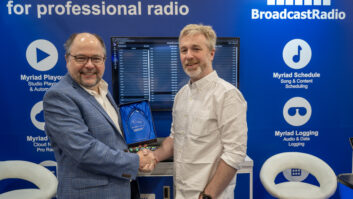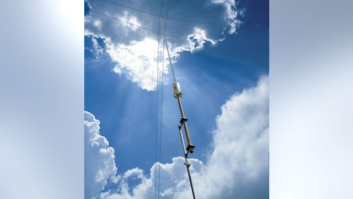Field Report: Broadcast Electronics AM-1A
Oct 1, 2001 12:00 PM, Mark Croom
When Northwestern College Radio acquired WMAD, Sun Prairie, WI, in January 1997, one of the first priorities was to replace the transmitter, a 1981-vintage unit from a defunct manufacturer. The previous owner spent $2,000 a year on tubes alone to maintain this unit. We selected the Broadcast Electronics AM-1 but did not purchase the new transmitter right away as we were also investigating the possibility of a power increase. We decided to delay the transmitter replacement until we knew exactly what power level would be needed.
Decision Time In the meantime, the old transmitter started showing its age in the summer of 2000 and began to fail on a regular basis. One failure required several days to fix while the problem was diagnosed and parts were ordered. It was realized quickly that the economies of replacement-part costs, lost air time and even regular maintenance expenses made a new solid-state transmitter a smart purchase, even if the station did receive a power-increase authorization in the future. To help justify the expense of the new transmitter, station management used operating cost figures obtained from the salesperson at Broadcast Electronics. Without any additional expensive breakdowns from the old transmitter, the new transmitter cost would be recovered in just three years. Based on the old transmitter’s performance over the last six months, the actual time period was going to be less.
The Northwestern College FM station already owns a Broadcast Electronics FM transmitter, which has provided outstanding service. Previous satisfaction made the AM-1A an easy decision, especially with its reasonable cost. (The AM-1 had been replaced by the AM-1A by the time we were ready to buy.) The basic transmitter has several standard features, including a modulation monitor and an AM stereo exciter. It also provides an array of control inputs and status outputs to interface with a remote-control system.
One unusual feature of the AM-1A is that it is does not include a rack enclosure. This feature allows the transmitter to be shipped in sections by package carriers like FedEx or UPS. The main output amplifier is rather heavy (packed weight was more than 80 pounds), but when the need is dire, receiving the transmitter by next-day shipping is helpful. Installed, the transmitter occupies 42″ (24RU) of space. The station bought a standard, 6-foot, 19-inch rack through a local audio supplier and had it wired with a welder-type outlet to provide the 220-volt, single-phase power source for the transmitter.
The transmitter is designed to operate into a 50V load with minimal reactance. Stations that must feed a load that is not 50V can install an optional output tuning unit for matching the transmitter to impedances outside the design range.
The transmitter doesn’t have much metering; instead it relies on LED status indicators (which we call idiot lights) on the front panel for most status and alert indications. There is a meter for reflected power and a multi-meter that measures two RF power ranges and AC input voltage. I would prefer additional metering for PA supply voltage and current.
Ordering and Installation It only took two weeks from the initial order for the transmitter to arrive at WNWC. To follow good engineering practice for solid state transmitters, we also installed AC surge-protection equipment. An assortment of amenities such as wire ties, and necessities such as ferrite cores, were provided with the transmitter.
The transmitter arrived before the equipment rack, which gave us some time to unpack the unit and study the documentation before beginning the installation. The transmitter manual is thorough and readable. By the time preparations were complete at the transmitter site, we were confident that the rest of the installation would be relatively simple.
Once the rack was delivered, the transmitter sections were installed easily. The final amplifier section can be installed by two people, but I recommend having three people available. It is a challenge for two people to handle the 80-pound section and get the rack screws installed.
On The Air The remote-control cabling, feedlines and AC power went in without a hitch, and we were ready to start the transmitter. However, once AC was applied, the transmitter didn’t work. This definitely was not what we expected, but it was the only problem encountered so far. The front panel indicated that lightning was present, and we didn’t have any clue as to why – it was a bright, sunny day. As it turned out, the bright sunlight from the open door of the building was activating the lightning sensor’s phototransistor and providing the false reading. The spark gap and phototransistor are clearly visible through vent holes at the side of the transmitter. After covering just enough holes to shadow the lightning sensor, we were once again ready to test the unit.
First, I ran the transmitter into a dummy load at its lowest power level, and everything looked fine. Next, I plumbed the transmitter through an antenna switch into the phasor, and began bringing it up through the power levels. Again, everything looked fine, though there was slightly more reflected power than I wanted for the permanent installation. I didn’t have access to a common point bridge, so I used the transmitter’s forward and reflected power metering to adjust the common point for minimum VSWR at the transmitter’s antenna terminals. This plan worked well, and the station ended up with base currents within two percent of the licensed values at the licensed common point current. The resulting reflected power was less than eight watts with 1,100 watts forward power.
The transmitter has performed well since its installation in July 2000.We’ve had no unplanned downtime since it was put into service. It also sounds great on the air. Without adjusting the station’s on-air processing, the audio sounds crisper and cleaner on typical radios. The station has never sounded better on a wideband radio than it does now.
We are very pleased with the transmitter so far, and we have not needed manufacturer product support yet. Based on my short experience with the transmitter, I recommend it to anyone requiring a straightforward, 1kW solid-state AM transmitter that’s easy to install and inexpensive. I think it’s a great buy.
Editor’s note: Field Reports are an exclusive BE Radio feature for radio broadcasters. Each report is prepared by well-qualified staff at a radio station, production facility or consulting company.
These reports are performed by the industry, for the industry. Manufacturer support is limited to providing loan equipment and to aiding the author if requested.
It is the responsibility of BE Radio to publish the results of any device tested, positive or negative. No report should be considered an endorsement or disapproval by BE Radio.
field report







